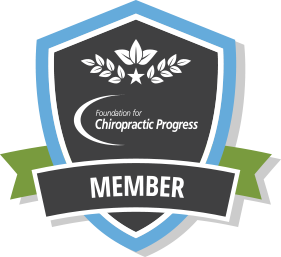Low
back pain (LBP) is a recurrent disorder that can occur anytime in a person’s
life and 50% of people who experience LBP seek health care during an episode.[1] [2]
At
least 85% of those who do seek care are diagnosed as experiencing
nonspecific/non-pathological LBP.[3] Effective
management of LBP in the United States is challenging and therefore it is
difficult to determine the best approach for each patient given the vast number
of recommended conservative treatment options within our complex health care
system.[4]
Researchers
from Optum Health Care Solutions[5] in
collaboration with researchers from the Jefferson School of Population Health[6] published
an article in a 2013 edition of Population Health Management[7] titled,
“Conservative Spine Care: Opportunities to Improve the Quality and Value of
Care” that suggests the utilization of a “classification-based” model for the
management of LBP which, in a clinical trial published September 29, 2011 in The
Lancet, demonstrated practical potential for improving clinical outcomes and addressing
incongruous utilization of services.[8] The STarT
Back Screening Tool (SBST)[9] can be
administered prior to initiating treatment and provides the portal of
entry provider the opportunity to incorporate evidence-informed decision criteria
and guidance regarding an appropriate conservative low back care pathway in
which to place the patient.
The
SBST approach changes the pattern of provider management and referral of LBP to
coincide with primary care data that suggests approximately 55% of patients are
at low risk of poor outcome (i.e. irrespective of treatment), 33% are at medium
risk, and 12% are at high risk.[10] Using
the SBST approach, low risk individuals usually benefit most from
receiving reassurance and advice while treatment options for medium risk
individuals are typically physiotherapy approaches to addressing pain and
disability. However, providers who are skilled at cognitive-behavioral
approaches in addition to physiotherapy interventions are best suited to render
care to high risk individuals.[11]
When
compared to current best practice, use of the SBST tool along with targeted
treatments increased efficiency, improved clinical outcomes, and reduced health
care costs. [4]
[1] Dagenais
S, Haldeman S. Evidence-Based Management of Low Back Pain. St Louis, MO: Mosby,
Inc. (Elsevier); 2012:1–2.
[2] Kent
PM, Keating JL. The epidemiology of low back pain in primary care. Chiropr
Osteopat. 2005;13:13.
[3]Deyo
RA, Weinstein JN. Low back pain. N Engl J Med. 2001;344:363–370.
[4] Kosloff,
Thomas M., David Elton, Stephanie A. Shulman, Janice L. Clarke, Alexis
Skoufalos, and Amanda Solis. "Conservative Spine Care: Opportunities toImprove the Quality and Value of Care." Population Health Management. Mary
Ann Liebert, Inc., 01 Dec. 2013. Web. 01 Feb. 2017.
[5] A
health services and innovation company whose mission is to help make the health
system work better for everyone.
[6] A
college whose mission is to prepare leaders with global vision to examine the
social determinants of health and to evaluate, develop and implement health
policies and systems that will improve the health of populations and thereby
enhance the quality of life.
[7]
A journal that provides comprehensive, authoritative strategies for improving
the systems and policies that affect health care quality, access, and outcomes,
ultimately improving the health of an entire population. The Journal delivers
essential research on a broad range of topics including the impact of social,
cultural, economic, and environmental factors on health care systems and practices.
[8] Hill
JC, Whitehurst DGT, Lewis M, et al. Comparison of stratified primary caremanagement for low back pain with current best practice (STarT Back): A randomisedcontrolled trial. Lancet. 2011;378(9802):1560–1571. https://www.youtube.com/watch?v=yVu6w_01p9k
[9] Developed
by researchers at Keele University (United Kingdom) with funding from Arthritis
Research UK
[10] Hill
JC, Dunn KM, Lewis M, et al. A primary care back pain screening tool:
Identifying patient subgroups for initial treatment. Arthritis Rheum. 2008;59:632–641.
[11] Sowden
G, Hill JC, Konstantinou K, et al. Targeted treatment in primary care for lowback pain: the treatment system and clinical training programmes used in theIMPaCT Back study (ISRCTN 55174281). Fam Pract. 2012;29:50–62.








